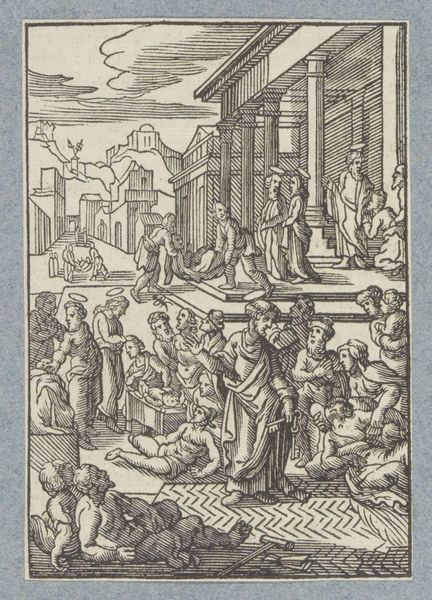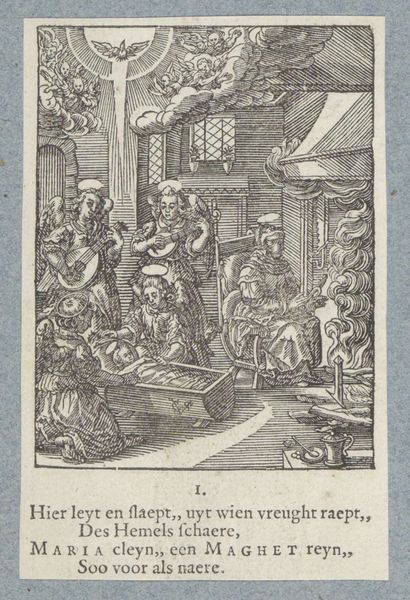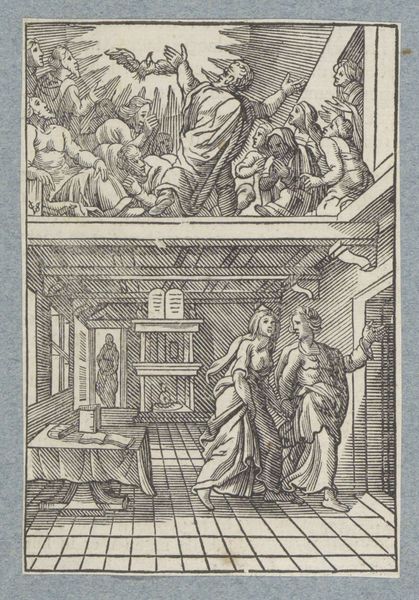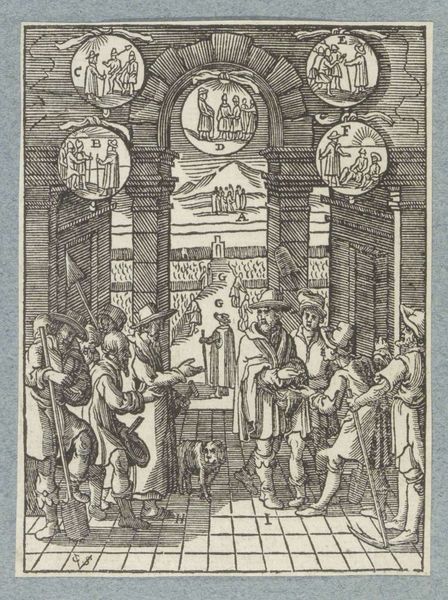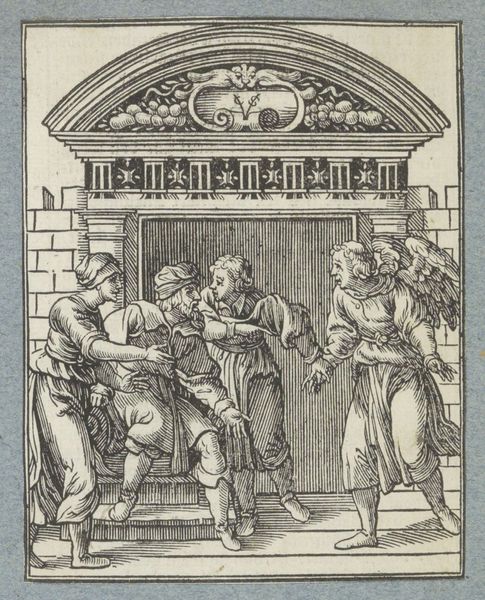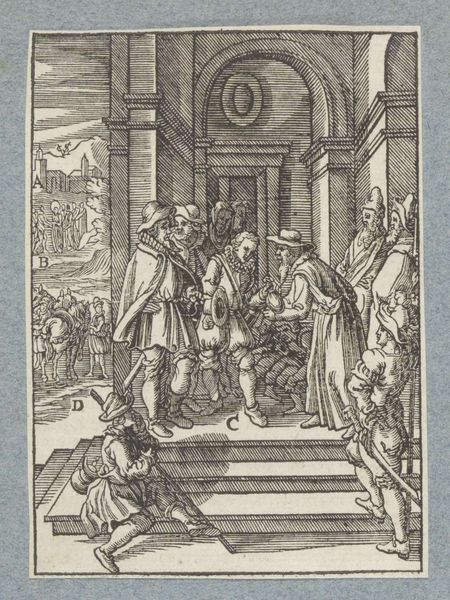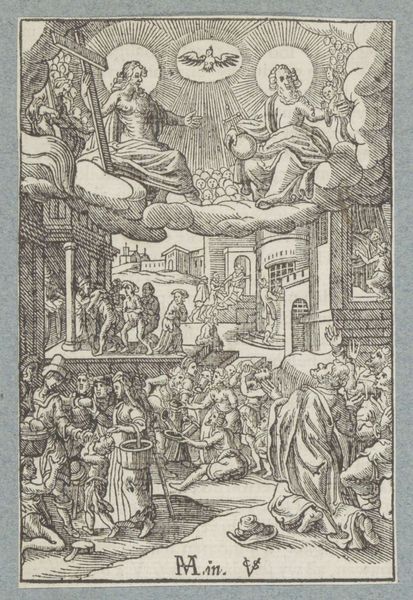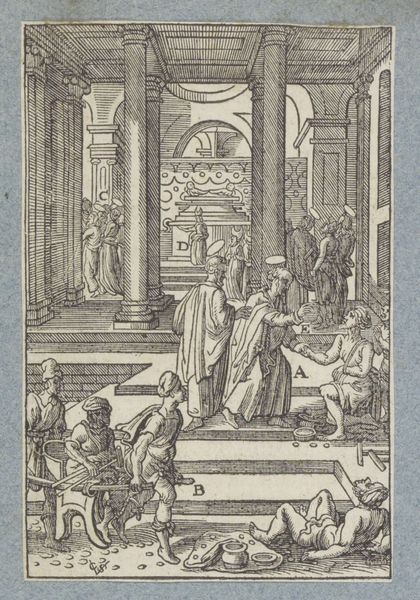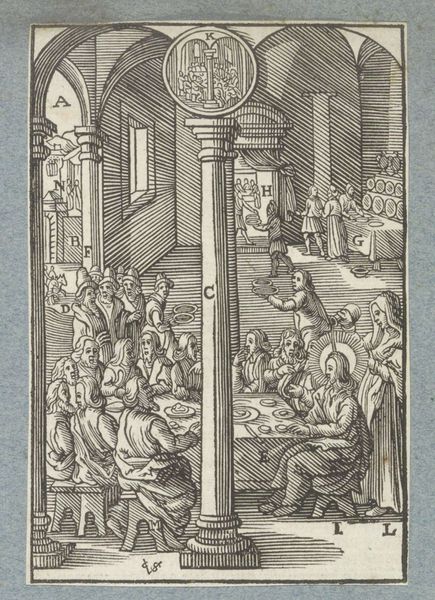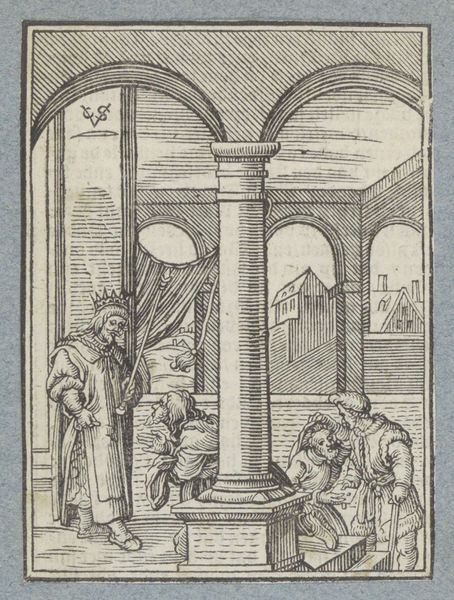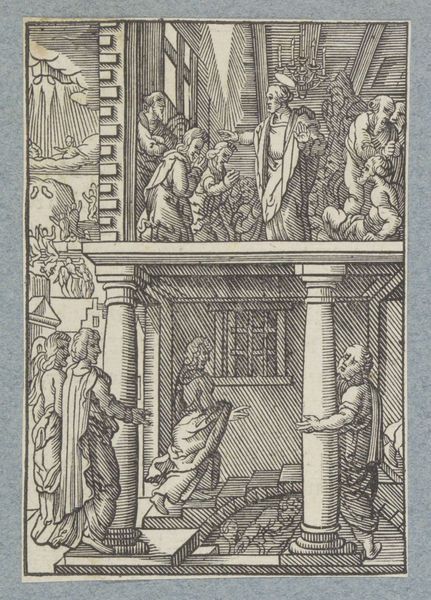
print, etching, engraving
#
narrative-art
#
baroque
# print
#
etching
#
history-painting
#
engraving
Dimensions: height 103 mm, width 74 mm
Copyright: Rijks Museum: Open Domain
Curator: Welcome. We're standing before "Visitatie," an engraving and etching by Christoffel van Sichem II, dating back to 1629. You can find this remarkable piece here at the Rijksmuseum. Editor: It strikes me as a whirlwind of detail, almost dizzying! There’s so much happening in one small space. It’s like looking into a very active dream. Curator: Precisely. The composition, with its meticulous lines and layering of scenes, reflects a key characteristic of Baroque narrative art, especially in printmaking. Notice how Van Sichem employs perspective—lines converging—to create a sense of depth despite the two-dimensionality. Editor: Yes, you're right. My eye keeps getting drawn to the little framed scenes *within* the main scene. Like tiny windows into other stories. Is that typical? Curator: Quite so. The use of embedded narratives functions to enrich the main subject, which in this instance shows Mary's visit to Elisabeth. These smaller scenes around the room aren't just decoration. Each contributes to the overall meaning through symbolic references. Consider the use of text throughout the composition—labeled figures—offering another layer for interpretation. Editor: It’s fascinating how he manages to suggest such grand spaces with so little...air. It's more like the suggestion of air! A crowded sort of divinity. You feel this scene would keep unfolding around you if you stood close enough. It has so many narrative tendrils, the figures, the detail in the floor. Curator: Indeed. The piece not only captures a pivotal biblical event but also serves as a rich study in contrasts—between open and closed spaces, foreground and background, linearity and texture—drawing the viewer into a contemplative state. Editor: And yet it’s so contained. It invites me to meditate on grand themes but it gives me no room to get lost in it, it leads you and lets you contemplate its many narrative layers in an extremely orderly manner. So the Visitatie—it does "visit" me after all! Thank you for pointing this out. Curator: Thank you for these refreshing views. We can now go ahead, reflecting on how historical context interacts with artistic interpretation.
Comments
No comments
Be the first to comment and join the conversation on the ultimate creative platform.

